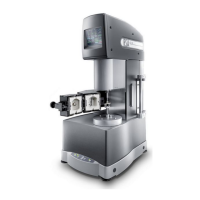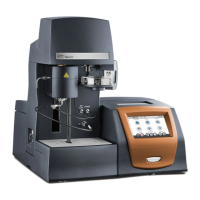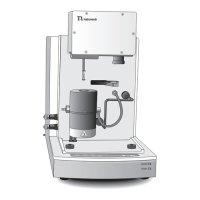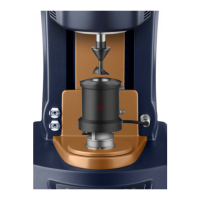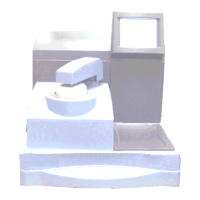AR 2000 Operator's Manual
61
A large diameter geometry (e.g., 60 mm) is more sensitive to stress changes and is used to measure low viscosity
samples.
Be sure to load the sample correctly and be careful not to under or overfill the geometry. If this occurs, it would
effectively change the diameters of the cones and, hence, adversely affect the shear stress factors.
Figure 6.6 summarizes the information given above on the choice of angle (or gap) and diameter.
Material
Stainless steel is relatively heavy, has a low coefficient of thermal expansion, is compatible with most samples,
and is very robust.
Aluminium geometries are lighter than steel, but have a larger coefficient of thermal expansion. They will go to
temperatures greater than 40°C, but are still heavier than acrylic.
Acrylic geometries are very light and are, therefore, most suitable to use with low viscosity samples. However,
you should not use acrylic geometries above 40°C.
See the beginning of this chapter for more details on materials.
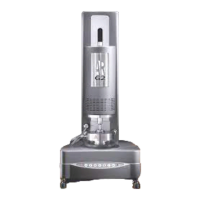
